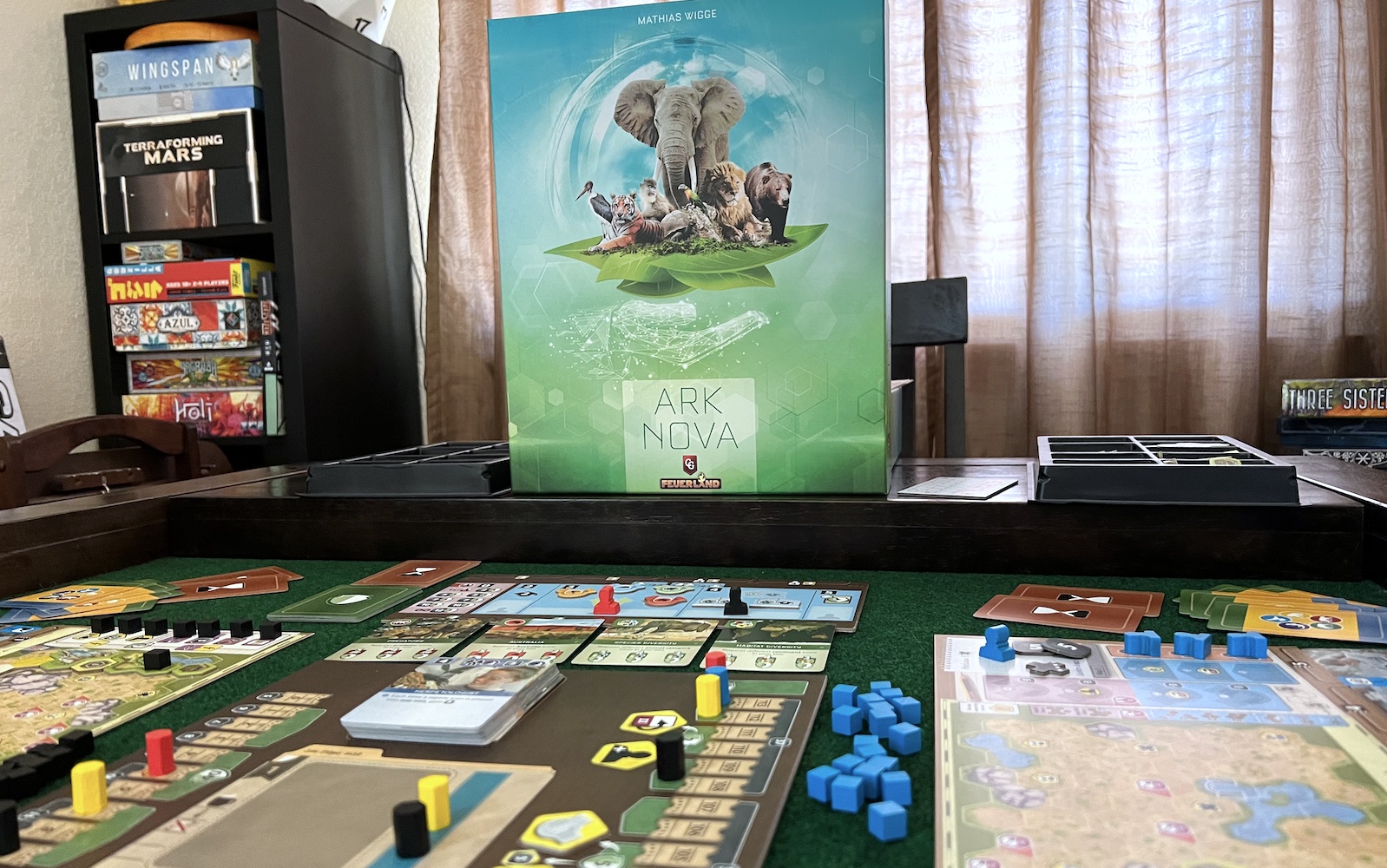In his multi part documentary series Everything is a Remix, filmmaker Kirby Ferguson’s primary claim is that the ultimate driver of progress in the arts, technology, and society is borrowing from others. Essentially, “copy, transform, and combine” to create something that is as much its own thing as what it borrows from others. Ark Nova, one of the hottest, hypiest board games of recent memory, is such a beast, and it’s grab-bag of mechanics and ideas cribbed from earlier games combine in a surprisingly cohesive and enjoyable fashion in spite of uneven art design and component quality, long playtime, and lack of player interaction. Capstone’s North American release of Fuerland’s debut title from designer Mathias Wigge has only been publicly available for a month or two at the time of this review and it has already climbed into the top 50 on Board Game Geek (#16 and climbing). So what exactly does this zoo-themed Euro do that makes it one of the most sought after boxes of cardboard to hit shelves in years? Simple: It’s a lot of FUN.
A medium heavy, 1-4 player game that averages about three hours at full player count (give or take thirty minutes), Ark Nova challenges each player to build and manage their own zoo, make associations with universities and zoos from other continents, and engage in acts of conservation to balance the profit their parks are making off of animals held in captivity. Given the popularity of video game franchises such as Zoo Tycoon and the Wildlife Parks series (not to mention, well, zoos), I’m surprised we don’t see this kind of theme more often on the table. Now, the mechanics of the game aren’t exactly informed by the theme, but nothing feels forced or contrived and the abstractions make sense. Yes, a three-plus hour runtime might be more of a commitment than some players are willing to give, yet each time I played I found myself more bummed that the game was over than I was concerned about the final score.

A big part of what makes Ark Nova work are the five player actions, represented by cards placed in order from 1-5 at the bottom of the player boards, with placement along the numbered track determining the maximum strength of the action(s) on the card during that turn. After each card action, the card used is moved to the first slot and the rest slide up towards slot five. There are five different action cards:
- Animals- Play animal cards from your hand that match up to the size of empty enclosures on your board.
- Build- Build an enclosure, kiosk, pavilion or a petting zoo, with the cost in currency being 2X the card position.
- Sponsors- Play a sponsor card equal to the number of the card position OR Break up to the position number and gain that amount of currency, advancing the track the same number of spaces..
- Cards- Draw/discard cards up to the amount indicated for each position number, including the ‘snap’ action, which allows you to grab any of the cards in the market on the board. Additionally, the Break track advances two spaces.
- Association- This action allows you to deploy a meeple to the association board, with the card position number determining what your options are. Position two moves advances you up the reputation track, three allows you to select a partner continent for your board, four allows you to select a university token for your board, and five enables you to place a conservation cube on one of the cards at the bottom (or top) of the association board and advance up the conservation track accordingly.
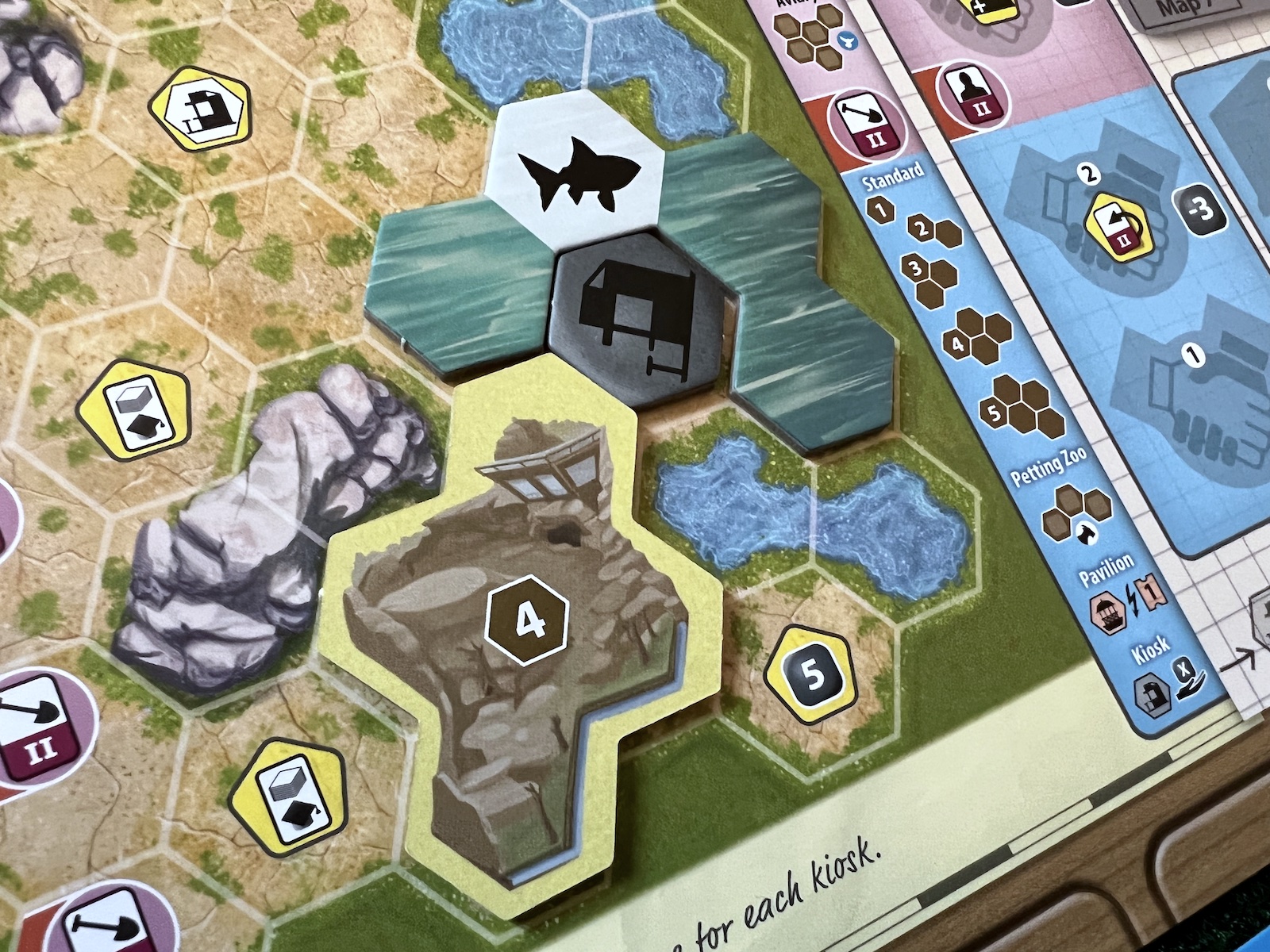
Flip the cards over, and you have upgraded level two abilities on the other side, with a total of four opportunities during the course of the game to upgrade and flip a card. Base abilities for the cards are generally fine through much of the game, but the upgrades for the Associations card in particular seem almost mandatory for any level of competitiveness in end-game scoring. This is because a second, free action becomes available to make donations to advance a single space up the conservation track. Conservation points are hard to come by, and this is the easiest way to attain them; simply via purchase. The amount you have to pay for each point increases with each consecutive purchase, with the first one costing only two currency, increasing to a maximum of twelve once all players claim the slots on the association board. The Build card also tended to be an upgrade priority due to some hexes on maps requiring it to build on, as well as making available additional special enclosures such as the aviary, and reptile house.
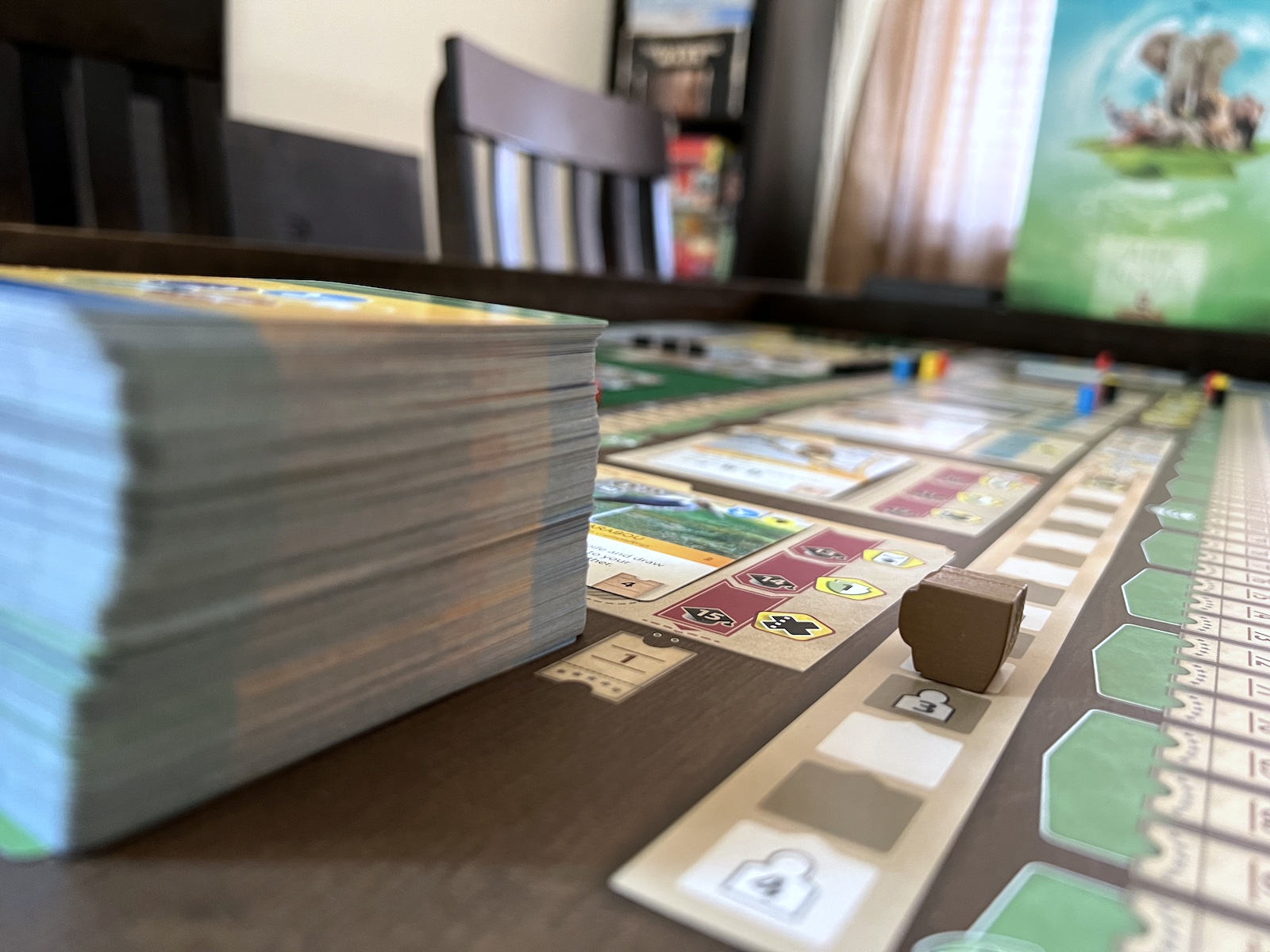
A whopping 255 cards are included in the main deck, which includes animal cards, sponsor cards, and conservation cards. Animal cards are played during the Animals card action, and can be played into an enclosure that matches or exceeds the number found on the card. Each animal card also displays a cost in currency and any additional requirements represented by icons, such as living near water or rocks, needing other animals of the same type in the zoo already, or having a number of specific continent icons present in your zoo. Each animal played advances you up the appeal track by the amount found on the bottom of the card, which determines your income after each Break. Some animals have powers or advance you along other tracks (conservation, reputation), which are also indicated on the bottom half of the card.
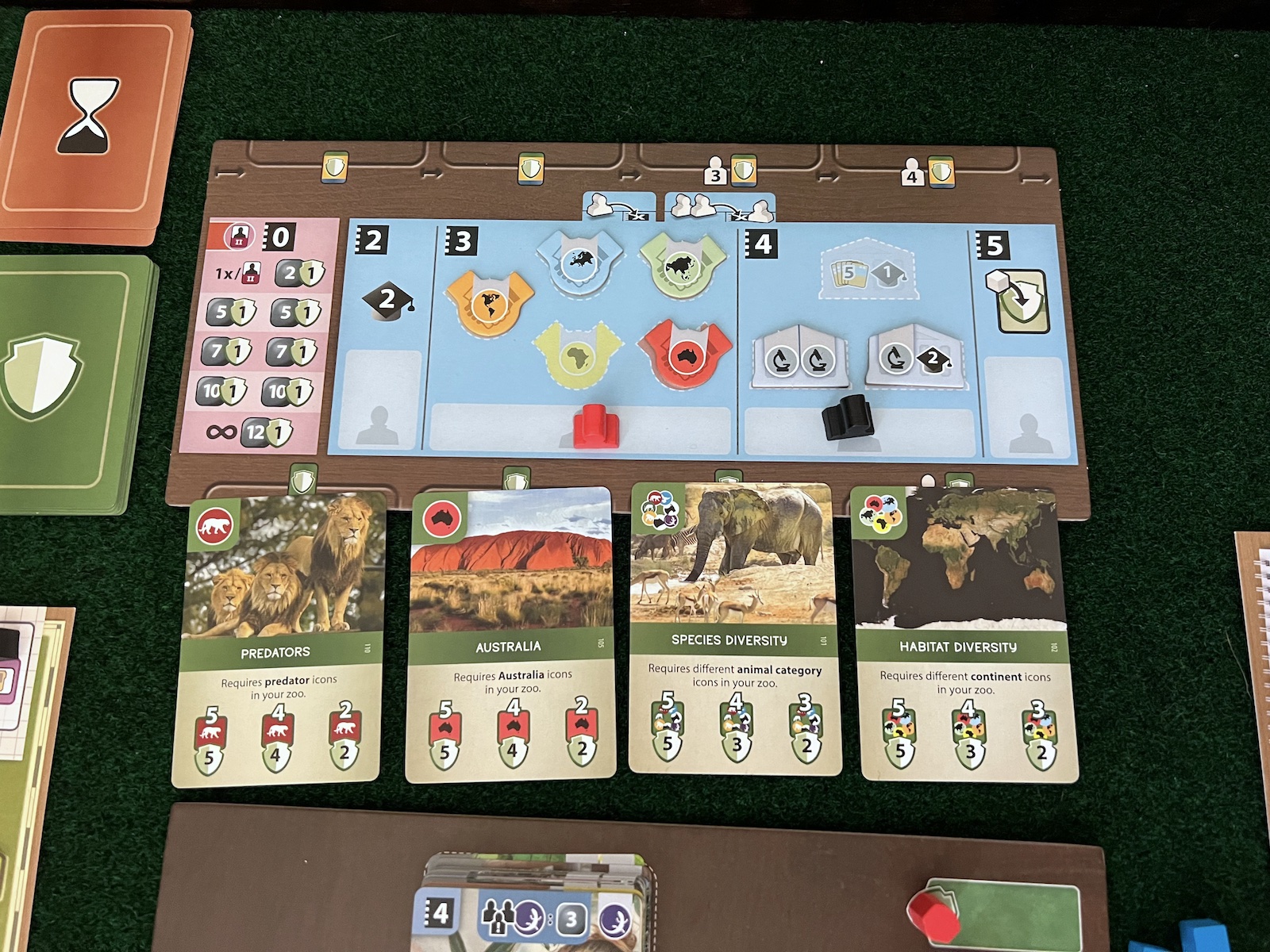
The rest of the deck consists mostly of Sponsor cards, which introduce the more engine building aspects to the game. Everything from residual income triggered by other player actions, to one-time abilities that confer a bonus, to special pre-populated animal enclosures, to endgame conservation point awards, to discounts on purchases or action types- there is a ton of variety with these cards, and the potential for chaining abilities does exist, but each card is unique and the deck is very, very large. A small number of Conservation cards are in the main deck as well (as opposed to the dedicated deck of Conservation cards), which are played along the top edge of the Association board. These can be game-changers to rack up the crucial Conservation points for end-game scoring, but be aware that just like the Conservation cards revealed at the beginning of the game, other players may place cubes on these cards as well.

Cards get drawn from the display, either from slots corresponding to your reputation track position or by snapping during a Cards action, or blindly from the deck itself. The upgraded Cards action even lets you play cards directly from the display. The six cards of the display is one of the few shared parts of the game, and it’s easy to get your plans spoiled when the player in front of you takes the card you’ve been waiting patiently to draft into your own hand. Breaks can really screw up plans sometimes as well, especially when you have a sizable hand you are forced to discard most of right as you are waiting for your turn to play them, due to hand size restrictions that are triggered by the break.
Ultimately, there are quite a few ways to advance on the various tracks, upgrade action cards and abilities, and build up an engine to chain all of this together, and after several playthroughs using different strategies never found a single path that felt more advantageous than the others. In fact, the deck is so large and unpredictable, premeditated strategies were generally futile and the fun was really in shaping a gameplan around what cards did show up in the moment. One of the real joys of this game is just surrendering to the deck and building your engine out with animals and sponsors; that dopamine rush every time an income ability is triggered by another player’s actions, the satisfaction of placing an enclosure on the map just so on the hex that grants a goodie or an upgrade, playing just the right animal card that rockets you up a track, causing a chain reaction of upgrades along the way. The mid-game of Ark Nova is one of the most enjoyable I’ve had in quite a while, and you just want it to never really stop, it’s that tasty.
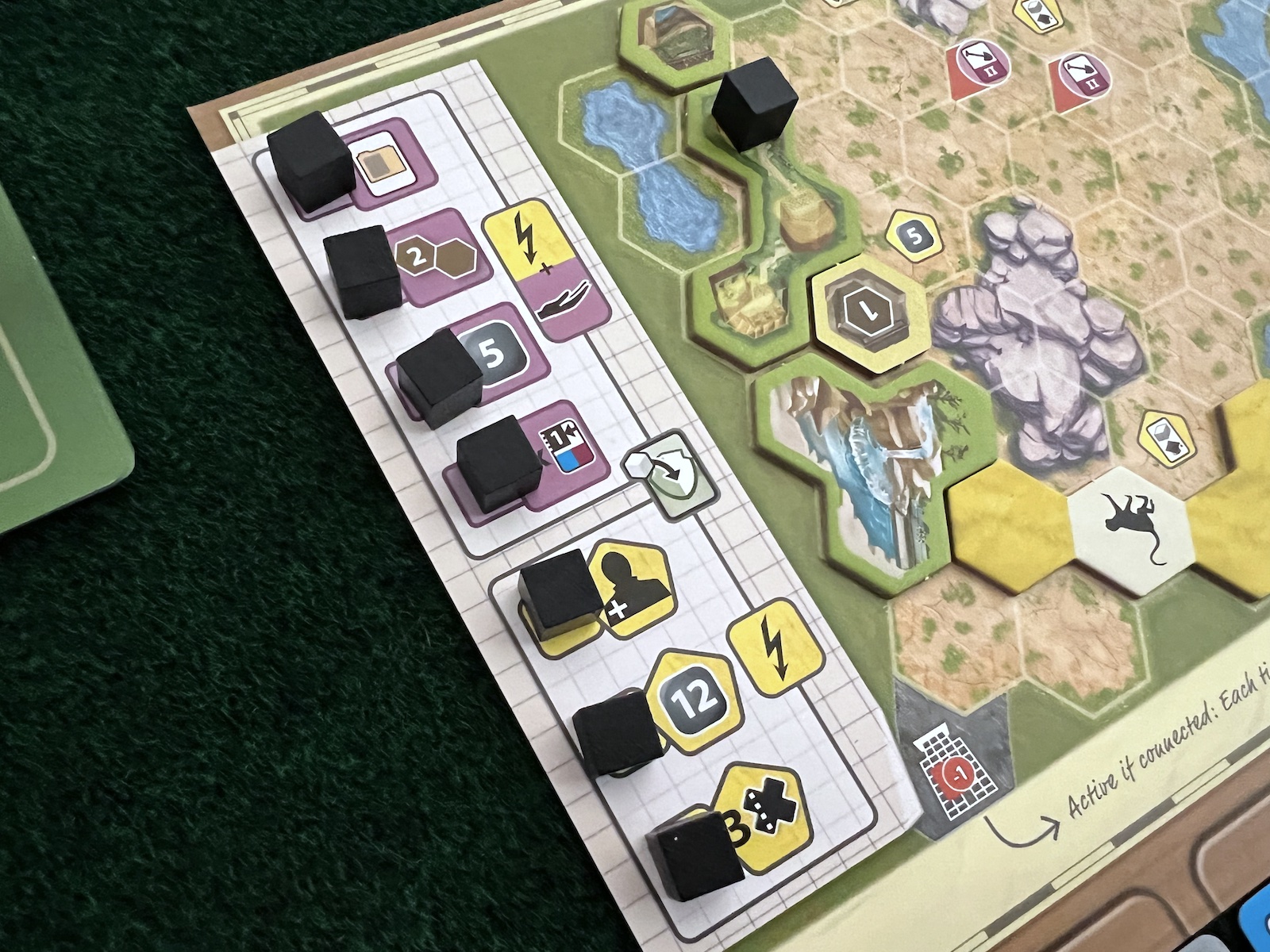
That’s not to say the game doesn’t have a few issues. Late game/ final scoring is fairly anticlimactic and sometimes shocking in its brutality. Endgame is triggered when one player’s Conservation track token and Appeal track tokens cross paths. After one more round of play from each other player, any additional endgame conservation points are allocated, the Conservation track token is shifted over to the corresponding appeal track position, and subtract that number from the actual Appeal track number. This is the final score. It will often be a negative number. We found that players who often neglected to advance on the Conservation track during the game would end up with staggering numbers in the negative. In fact, most of the time, the player who triggered the end of the game was often the only player in the positive. How close a game actually was was often obscured by this disparity, with a winning score being 9 and the next runner-up getting a -4, a loss which might hit harder than if both scores were above zero with a much wider gulf. Getting a negative score just doesn’t feel good.

The art on the cards is pretty uneven. Animal cards very appropriately have solid photographs of the animals they depict, but things get a little rougher with the sponsor cards, with some almost certainly sourced from stock photography sites with the barest of touch-ups. The Action cards are the most egregious offenders, with posterize filter stock photos that look like they were done by somebody’s nephew with a student version of Photoshop. This is in sharp contrast to the expansive yet very coherent visual language presented in the iconography of the game. I appreciated the one page (front and back) Icon Overview, but was a bit puzzled as to why it didn’t depict all the icons.
Finally, the money- cardboard squares in three sizes (1/5/10), just some gray squares with white numbers on them. This stuck out like a sore thumb for me, and the design didn’t feel like part of the same game as the rest of the components did. I’m not expecting elaborate metal coins or anything like that, I just want something that looks better stacked up on my playmat. Also, player color options are just unsatisfying (red, blue, yellow and black? Where’s my green???)
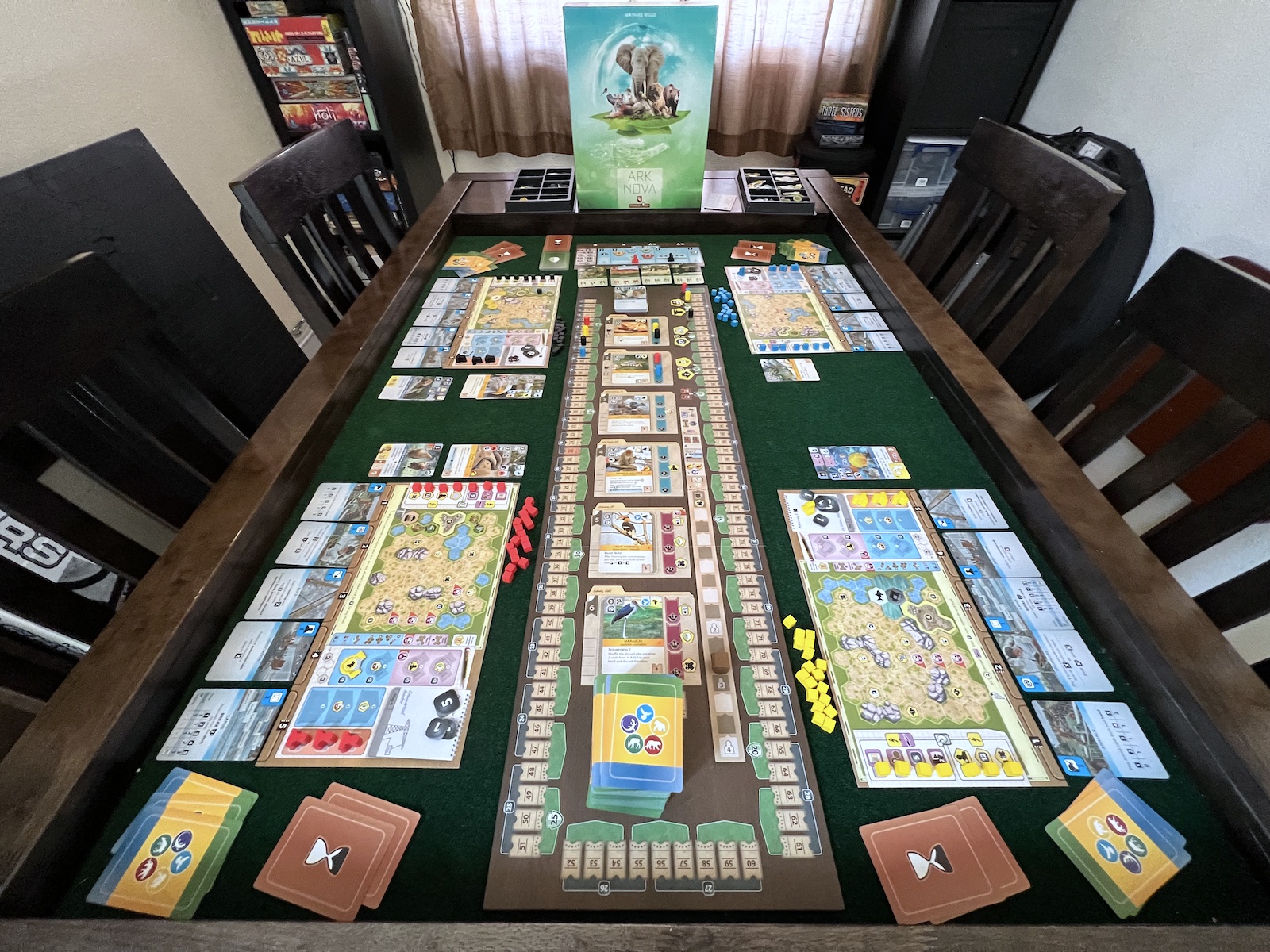
Despite these nitpicks, Ark Nova is definitely deserving of the praise being heaped upon it. Play time and weight may deter some before cardboard even hits the table, but it is a surprisingly easy teach, and after a turn or two the fun starts kicking in. There’s a lot of talk about “gateway games”, games that are great to introduce new players to the hobby with. Ark Nova is definitely not one of those games, but I do think it can be a great game to introduce players to more complex (heavier) games with.
Mike Dunn is the old man of Gaming Trend, having cut his teeth on Atari consoles and First Edition Advanced Dungeons & Dragons back in the day. His involvement with Gaming Trend dates back to 2003, and he’s done everything from design and code to writing and managing. Now he has come full circle, with a rekindled passion for tabletop gaming and a recent debut as Dungeon Master (nearly forty years after he purchased the original DMG).

For a game that borrows a lot of mechanics and ideas from other games, Ark Nova surprises by not only making such disparate elements work, but making them work really well within a great theme, resulting in something that is just a heck of a lot of fun. The endgame can be a bit brutal and the art direction is uneven and at times amateurish, but there isn’t enough wrong to diminish the joy of actually playing. Expect to see this on game of the year lists in a few months.
PROS
- Great theme.
- Easy to teach.
- Absolute blast to play!
CONS
- Uneven visual design
- Brutal endgame scoring
- Weight and game time may deter some players.
See below for our list of partners and affiliates:
